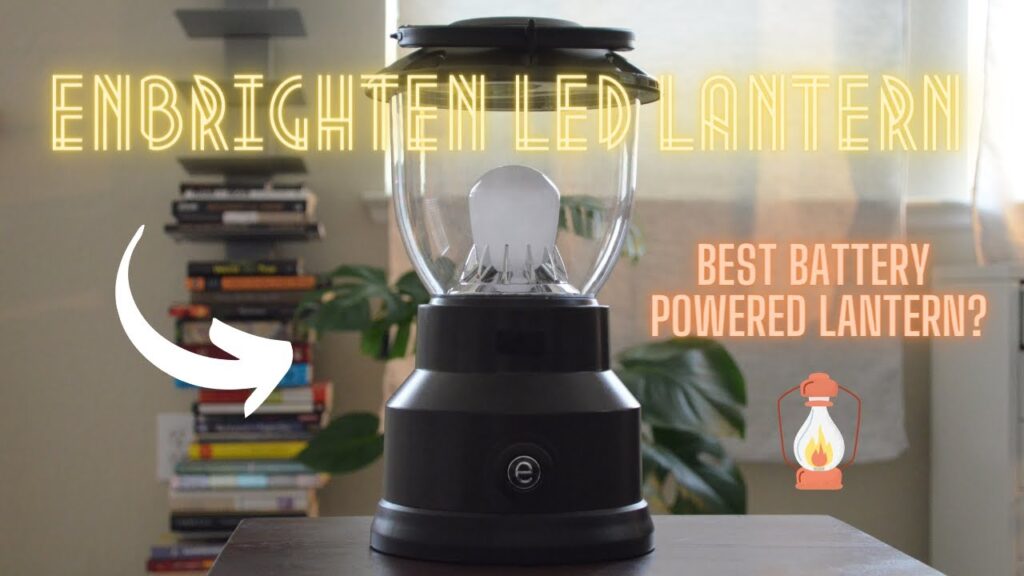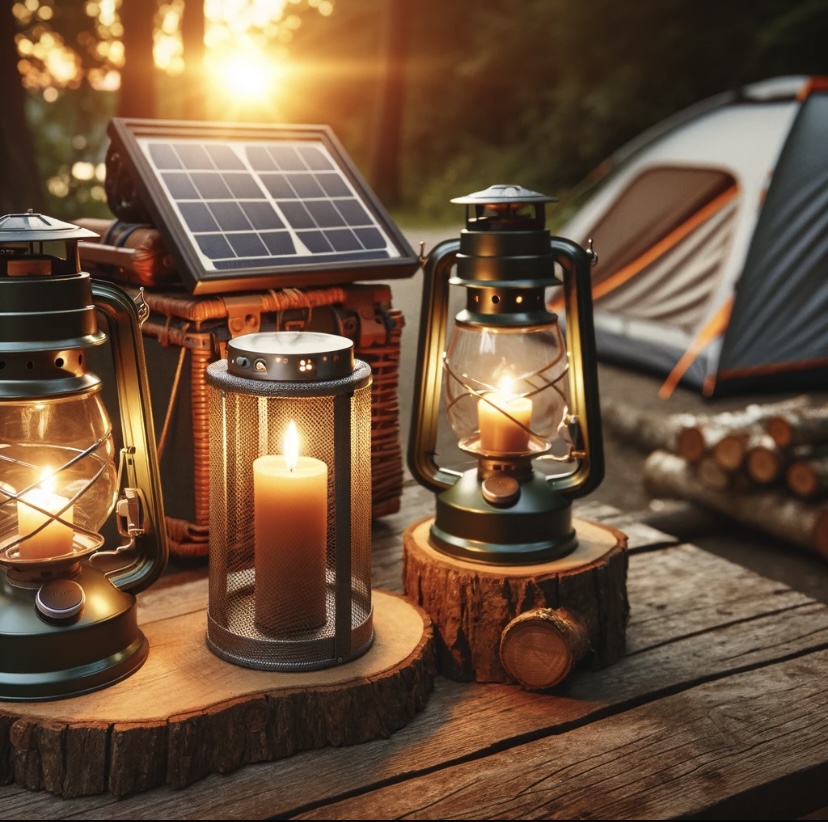When it comes to choosing a lantern for your outdoor adventures, the debate between battery-powered and fuel-powered options has always been a topic of discussion. Both types have their pros and cons, and finding the perfect one for your needs can be tricky. In this article, we will explore the similarities and differences between battery-powered and fuel-powered lanterns, helping you make an informed decision for your next camping trip or backyard gathering. Get ready to brighten up your nights and find out which lantern reigns supreme!

Battery-powered lanterns
Battery type
Battery-powered lanterns are a popular choice among outdoor enthusiasts and campers. One of the key factors to consider is the type of battery used in these lanterns. Most battery-powered lanterns use rechargeable lithium-ion batteries, which offer several advantages. Lithium-ion batteries have a high energy density and can store more power compared to other battery types. This means that they can provide longer run times and brighter illumination. Moreover, lithium-ion batteries have a longer lifespan, making them a reliable choice for prolonged outdoor use.
Brightness
When it comes to brightness, battery-powered lanterns have made significant advancements in recent years. With the advancements in LED technology, battery-powered lanterns can now emit a bright and even light that illuminates a large area. The brightness of these lanterns is often measured in lumens, with higher lumens indicating a brighter light output. Battery-powered lanterns can range from a few hundred lumens for basic models to over a thousand lumens for high-end lanterns. This wide range allows users to choose a lantern that suits their specific needs and preferences.
Run time
Battery-powered lanterns offer the advantage of extended run times compared to fuel-powered lanterns. Due to the efficiency of lithium-ion batteries, these lanterns can provide continuous illumination for several hours on a single charge. The run time largely depends on the battery capacity and the brightness setting selected. Some battery-powered lanterns also offer adjustable brightness levels, allowing users to conserve battery power when maximum brightness is not required. Overall, the longer run time of battery-powered lanterns makes them a practical choice for overnight camping trips or extended outdoor activities.
Portability
Battery-powered lanterns are known for their portability. They are typically compact and lightweight, making them easy to carry and store in backpacks or camping gear. Additionally, many battery-powered lanterns feature collapsible designs, allowing them to be easily packed and transported. This portability is particularly beneficial for hikers and backpackers who value lightweight and space-saving equipment. Battery-powered lanterns are an excellent choice for those who prioritize convenience and mobility during their outdoor adventures.
Ease of use
Battery-powered lanterns are incredibly user-friendly, even for individuals with limited outdoor experience. These lanterns often come with simple and intuitive controls, making it easy to adjust the brightness levels or turn the lantern on and off. Additionally, many battery-powered lanterns utilize USB charging ports, enabling users to charge the lantern using various power sources, such as portable power banks or solar panels. The versatility and ease of charging make battery-powered lanterns a practical choice for individuals who prefer hassle-free and convenient lighting solutions.
Fuel-powered lanterns
Fuel type
Fuel-powered lanterns use combustible fuels, such as propane or butane, to generate light. The type of fuel used can significantly impact the performance and usability of the lantern. Propane lanterns are commonly chosen for their convenience and availability. Propane canisters are readily found in camping stores and can provide a consistent and reliable fuel source. Alternatively, butane lanterns offer a higher energy content and burn more efficiently in colder temperatures. The choice of fuel type ultimately depends on personal preferences, availability, and the specific requirements of the outdoor activity.
Brightness
Fuel-powered lanterns are known for their impressive brightness. These lanterns often utilize a mantle or a mesh-like structure that glows brightly when heated. This design allows fuel-powered lanterns to emit a radiant light that can illuminate a wide area, making them suitable for large group settings or activities that require maximum visibility. The brightness of fuel-powered lanterns can vary depending on the type of fuel used and the specific model. However, fuel-powered lanterns generally provide a brighter and more intense light output compared to their battery-powered counterparts.
Run time
The run time of fuel-powered lanterns depends on the size of the fuel canister and the brightness setting. Larger fuel canisters can provide extended run times, allowing for several hours or even days of continuous light. However, it is worth noting that fuel-powered lanterns tend to consume fuel at a faster rate compared to battery-powered lanterns. Therefore, it may be necessary to carry additional fuel canisters for longer trips or activities with high illumination demands. While fuel-powered lanterns offer excellent luminosity, users should be mindful of their fuel consumption and plan accordingly.
Portability
Fuel-powered lanterns are generally bulkier and heavier compared to their battery-powered counterparts. The inclusion of a fuel canister and the intricate construction for producing a brighter light contribute to the overall weight and size of these lanterns. However, it is essential to consider the intended use when evaluating portability. Fuel-powered lanterns are well-suited for car camping or activities where weight and size are not significant concerns. They are less ideal for backpackers or hikers seeking lightweight and space-saving equipment.
Fuel availability
One crucial factor to consider when choosing a fuel-powered lantern is fuel availability. While propane and butane canisters are commonly available in camping stores, remote or less frequented areas may have limited access to these fuels. This availability can become crucial during longer camping trips or expeditions where obtaining additional fuel may not be convenient. It is essential to assess the fuel availability at the planned location and ensure that an adequate supply can be secured to support the duration of the outdoor activity.
Comparing battery-powered and fuel-powered lanterns
Cost
In terms of cost, battery-powered lanterns have an advantage over fuel-powered lanterns. Battery-powered lanterns generally have a higher upfront cost due to the inclusion of rechargeable lithium-ion batteries and advanced LED technology. However, considering the long lifespan of the batteries and the absence of ongoing fuel costs, battery-powered lanterns prove to be more cost-effective in the long run. On the other hand, fuel-powered lanterns require the purchase of fuel canisters, which can incur ongoing expenses, particularly for frequent or extended outdoor adventures.
Environmental impact
When it comes to environmental impact, battery-powered lanterns have a clear advantage. They produce zero emissions during operation, contributing to a cleaner and healthier outdoor environment. In contrast, fuel-powered lanterns emit carbon dioxide and other pollutants during combustion, contributing to air pollution and potentially harming ecosystems. Battery-powered lanterns are an eco-friendly choice for those who want to minimize their carbon footprint and prioritize sustainability.
Maintenance
Battery-powered lanterns generally require minimal maintenance. Rechargeable lithium-ion batteries can be easily recharged using various power sources, and regular cleaning and storage maintenance are typically sufficient to keep the lantern in good condition. In comparison, fuel-powered lanterns require more maintenance. The fuel canisters need to be regularly checked for leaks or damages, and the lantern’s mantle or mesh structure may need replacement or cleaning. The additional maintenance requirements of fuel-powered lanterns can be a factor to consider, especially for those seeking a simpler and fuss-free lighting solution.
Safety
Both battery-powered and fuel-powered lanterns prioritize safety, but each has its distinct considerations. Battery-powered lanterns eliminate the risks associated with open flames and combustion, making them a safer option for families with young children or locations prone to fire hazards. They are also less prone to accidental fuel spills or leaks. On the other hand, fuel-powered lanterns require cautious handling and proper ventilation to prevent the buildup of dangerous gases. Users should be aware of the risks associated with fuel combustion and follow safety guidelines to ensure a secure outdoor experience.
Versatility
In terms of versatility, battery-powered lanterns offer more options. They often come with additional features such as adjustable brightness levels, USB charging ports, and sometimes even built-in power banks. These features allow users to adapt the lantern to various scenarios and charging methods. Fuel-powered lanterns, while reliable and bright, lack the flexibility and adaptability provided by battery-powered lanterns. The ability to recharge using alternative power sources makes battery-powered lanterns a versatile choice for outdoor enthusiasts seeking practical and adaptable lighting solutions.
Now You Know Comparing Battery-Powered and Fuel-Powered Lanterns
In conclusion, when comparing battery-powered and fuel-powered lanterns, several factors must be considered. Battery-powered lanterns offer the advantages of rechargeable lithium-ion batteries, extended run times, portability, ease of use, and a more environmentally friendly operation. On the other hand, fuel-powered lanterns provide impressive brightness, long-lasting fuel supply options, and a higher initial brightness output. The decision between the two ultimately depends on individual preferences, specific outdoor activities, and the importance placed on factors such as cost, environmental impact, maintenance, safety, and versatility. By carefully evaluating these factors, you can choose the lantern that best suits your needs and enhances your outdoor experiences.

Leave a Reply